by Walt Anderson
Goldeneye! No, not the James Bond movie (though the original James Bond was an ornithologist). I mean the Common Goldeneye, a gorgeous duck very near to my heart (emotionally, not anatomically).
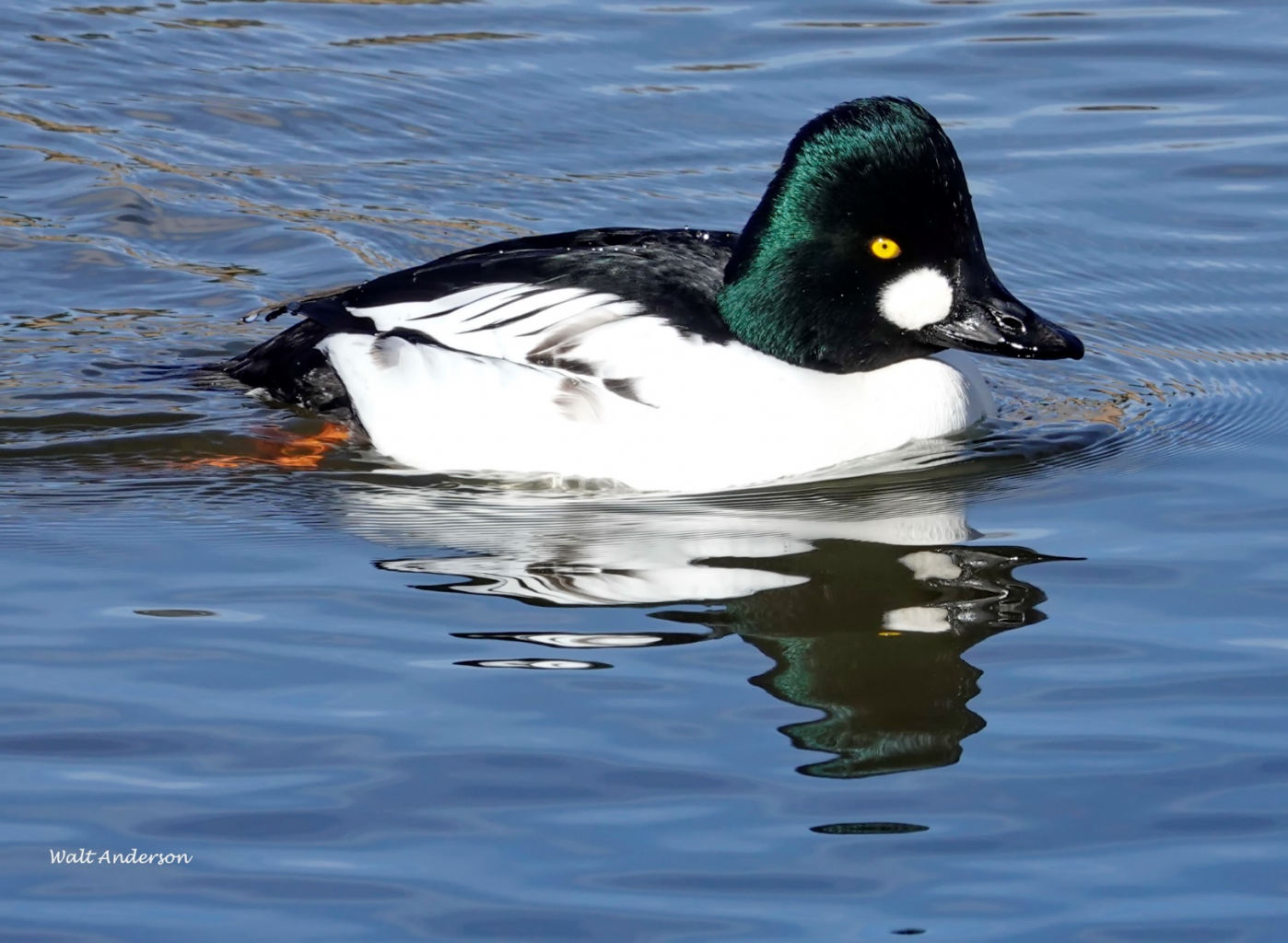
The Common Goldeneye is a “sea duck” in the tribe Mergini, along with its closest relatives, the Barrow’s Goldeneye and the Bufflehead. This species breeds in boreal forests that stretch across most of Canada and Alaska, as well as in Europe and in scattered locales across Asia. It moves south in the winter, often to coastlines where it feeds on mollusks and crustaceans in seawater, but we see it in freshwater areas in Arizona, usually in deeper waters (mid-lake) and thriving in the cold waters below the big dams on the Colorado River. If you see a goldeneye in Arizona, it is most likely a Common (duh!), since the Barrow’s is rare here.
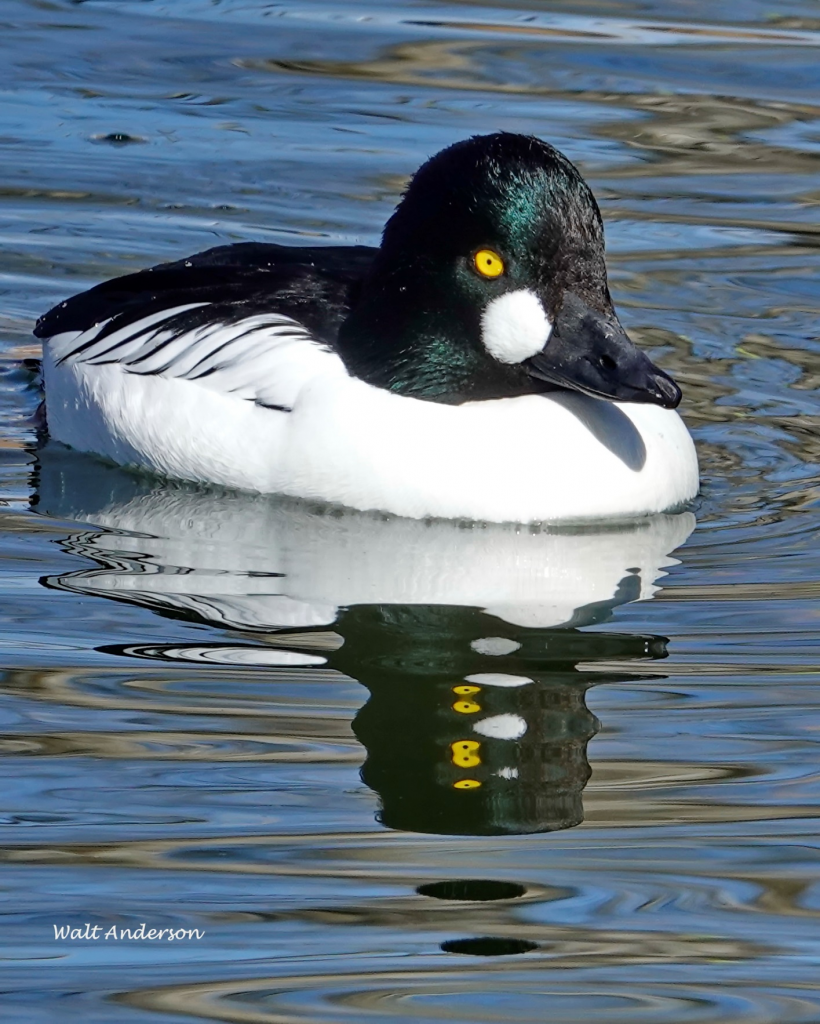
The name is obvious—the male has a deep golden eye, and in this case, its reflection has 5 of them! Otherwise, it is a striking black-and-white duck that typically shows greenish iridescence on the head. The circular white patch on the cheek helps distinguish it from the male Barrow’s, which has a white crescent instead.
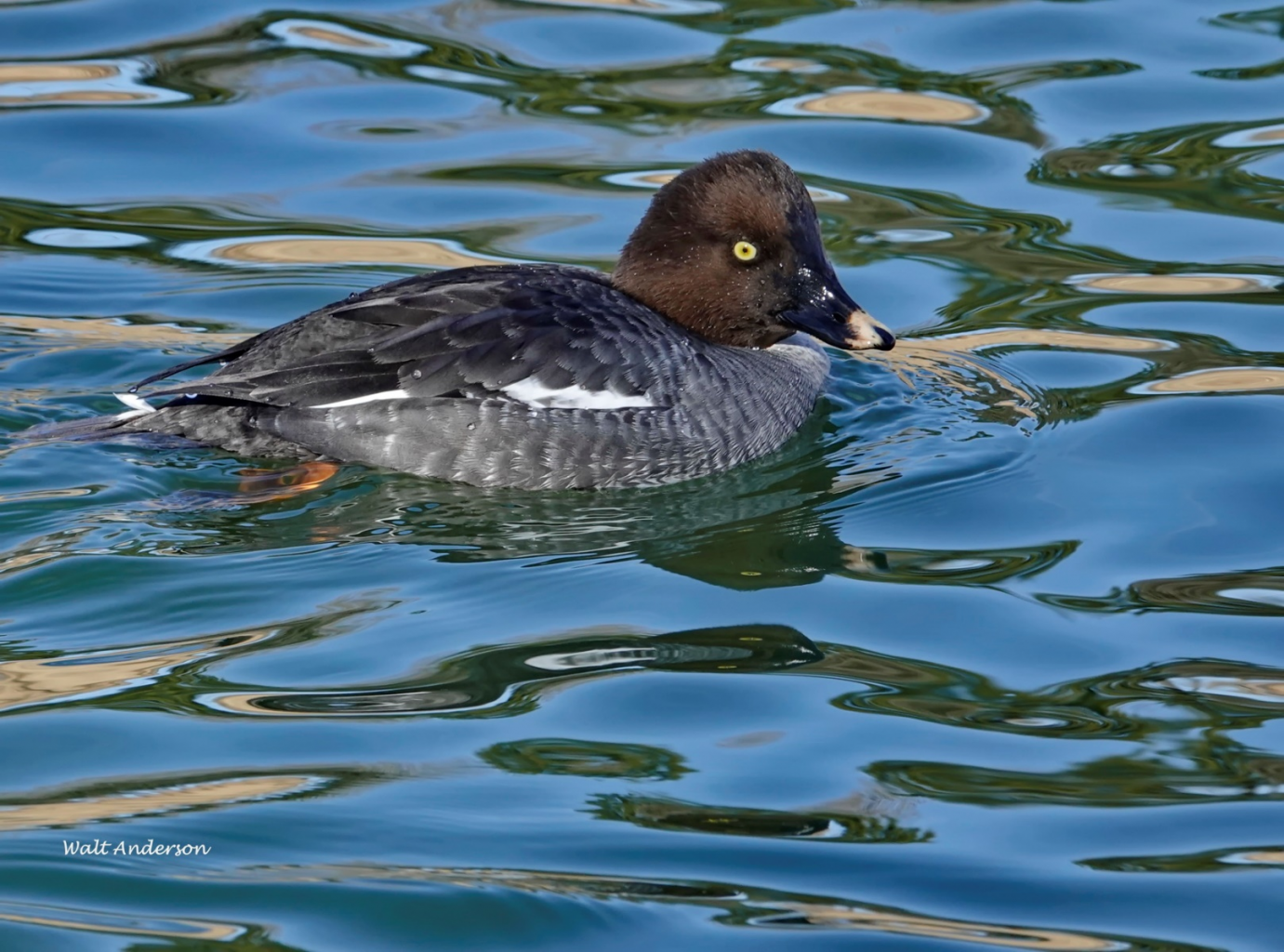
The hen is more subdued in coloration, with silvery flank and breast feathers, a bronzy head, a slightly paler eye, and usually a two-toned bill (black with light tip). Like the male, she has bold white patches on the inner wing that are conspicuous in flight.
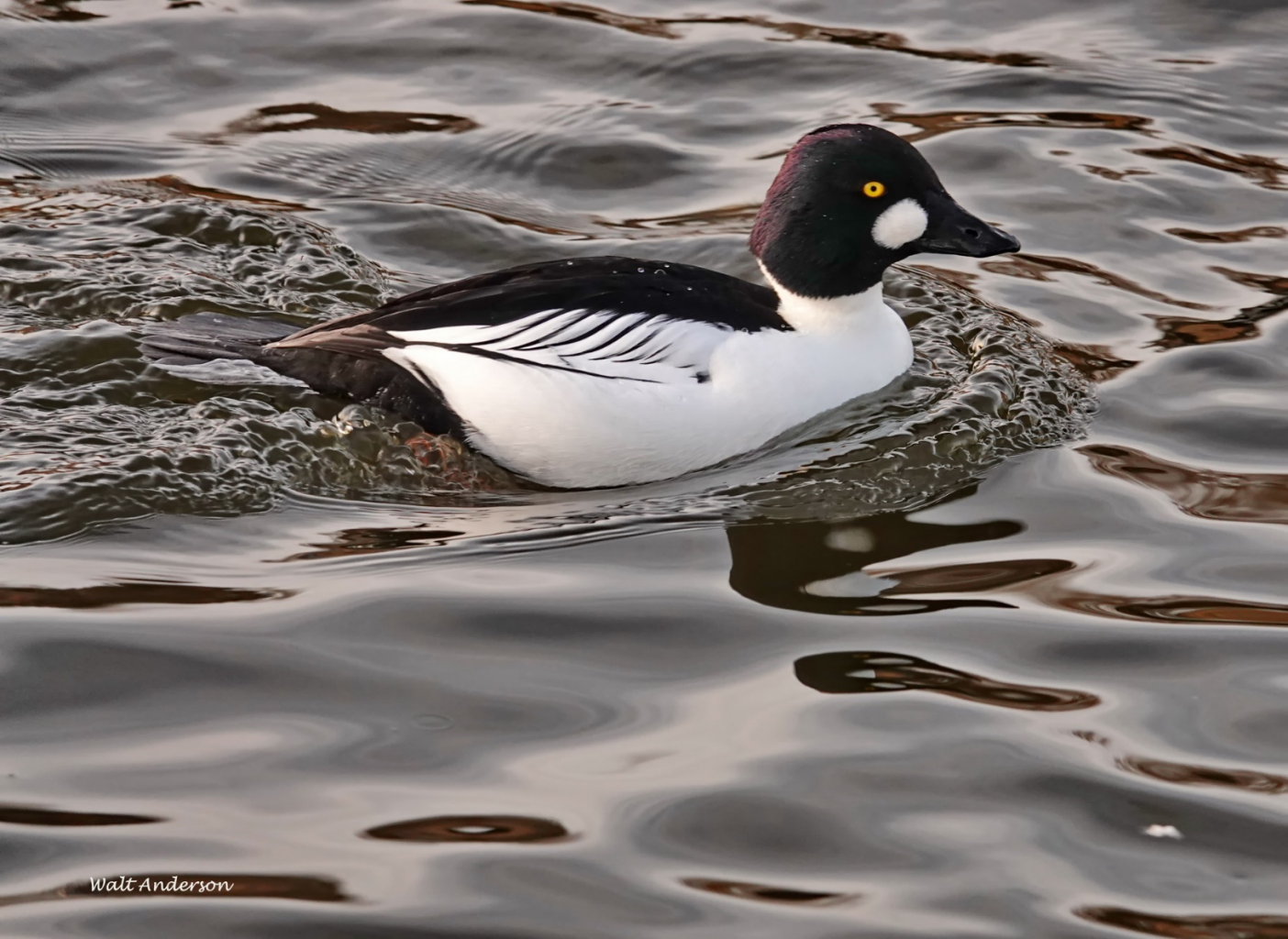
Iridescence can trick you. Just as a Mallard’s green head can look purple in some lights, the same is true for the Common Goldeneye. The color comes from light scattered from the structure of the feathers, not from a green or purple pigment. This male is a bubble-making machine.
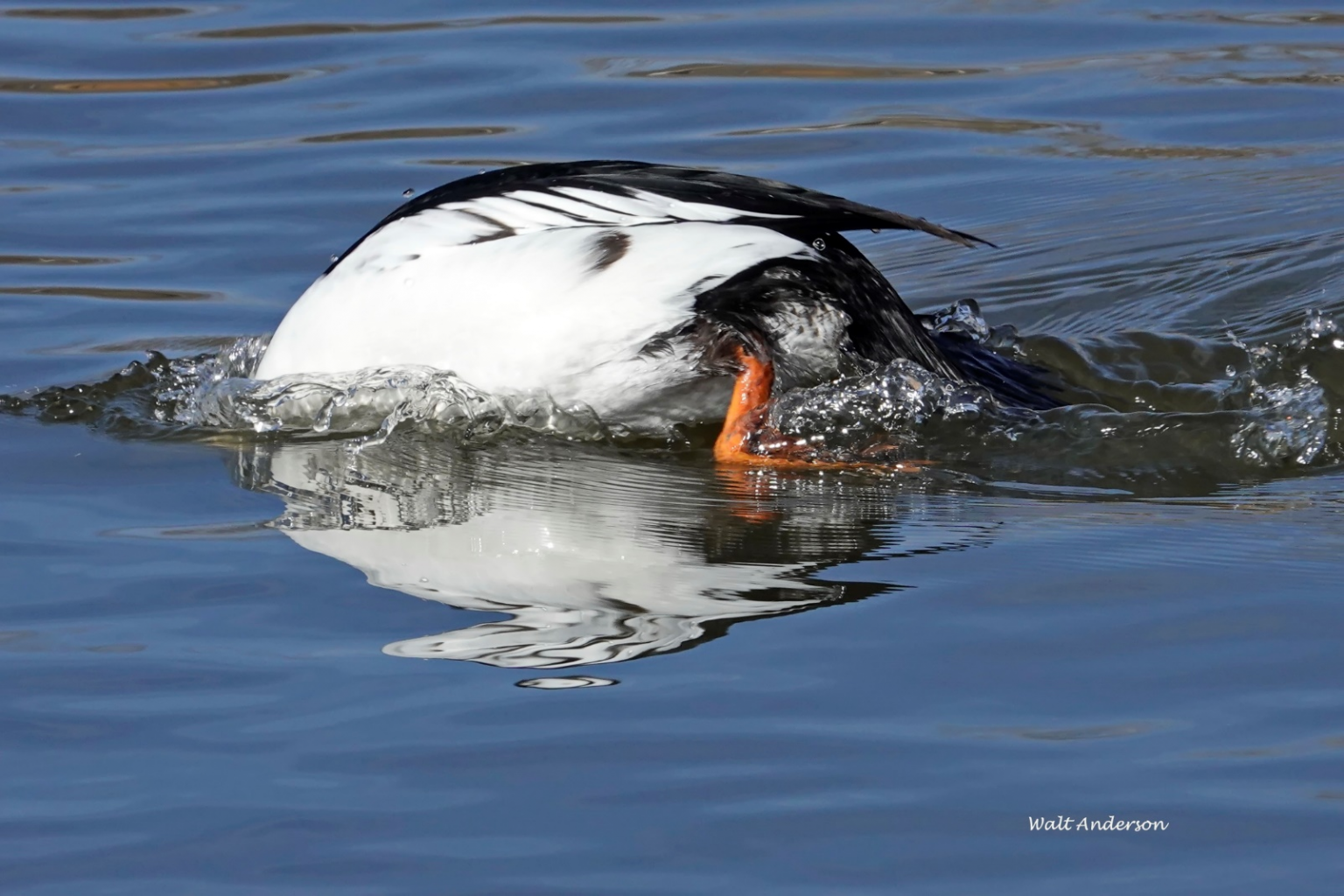
Legs are placed well back on the body, the better for swimming and diving. The birds feed on aquatic invertebrates (insects, crustaceans, mollusks, insects) primarily, though they consume some vegetative material, especially in fall. Don’t be surprised to see one come up with a juicy crawdad (and more power to them, as crayfish are not native to Arizona).

Goldeneyes are perfectly adapted to water, where they spend almost all their lives except when flying from place to place. Notice how they displace water when they dive; it looks almost like this one has erupted from a black hole to disappear again in some kind of aqueous time warp. They sleek their feathers tight to their bodies when they dive and use their big, webbed feet for underwater propulsion.
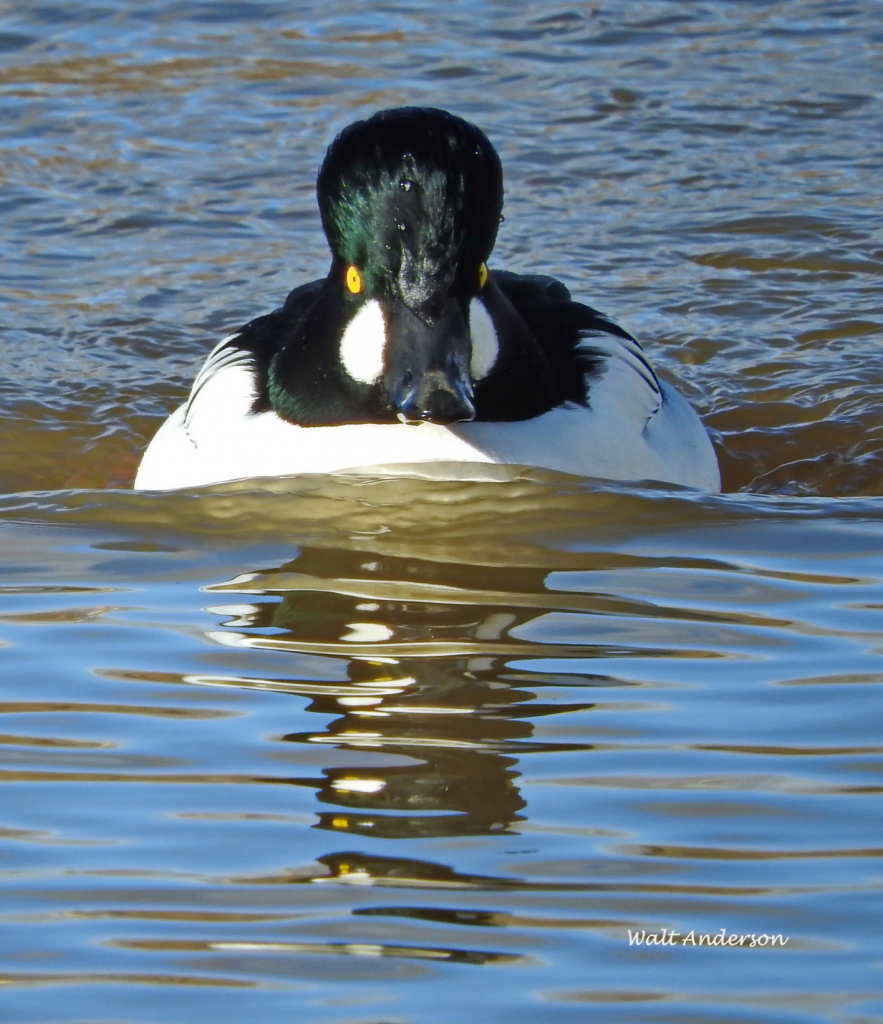
The scientific name for this goldeneye is Bucephala clangula. That translates roughly into “bull-headed one that screams.” These are cheeky birds—literally and figuratively. They are aggressive toward other ducks, even though they often hang out together in small flocks. They often steam across the water to intimidate a rival.
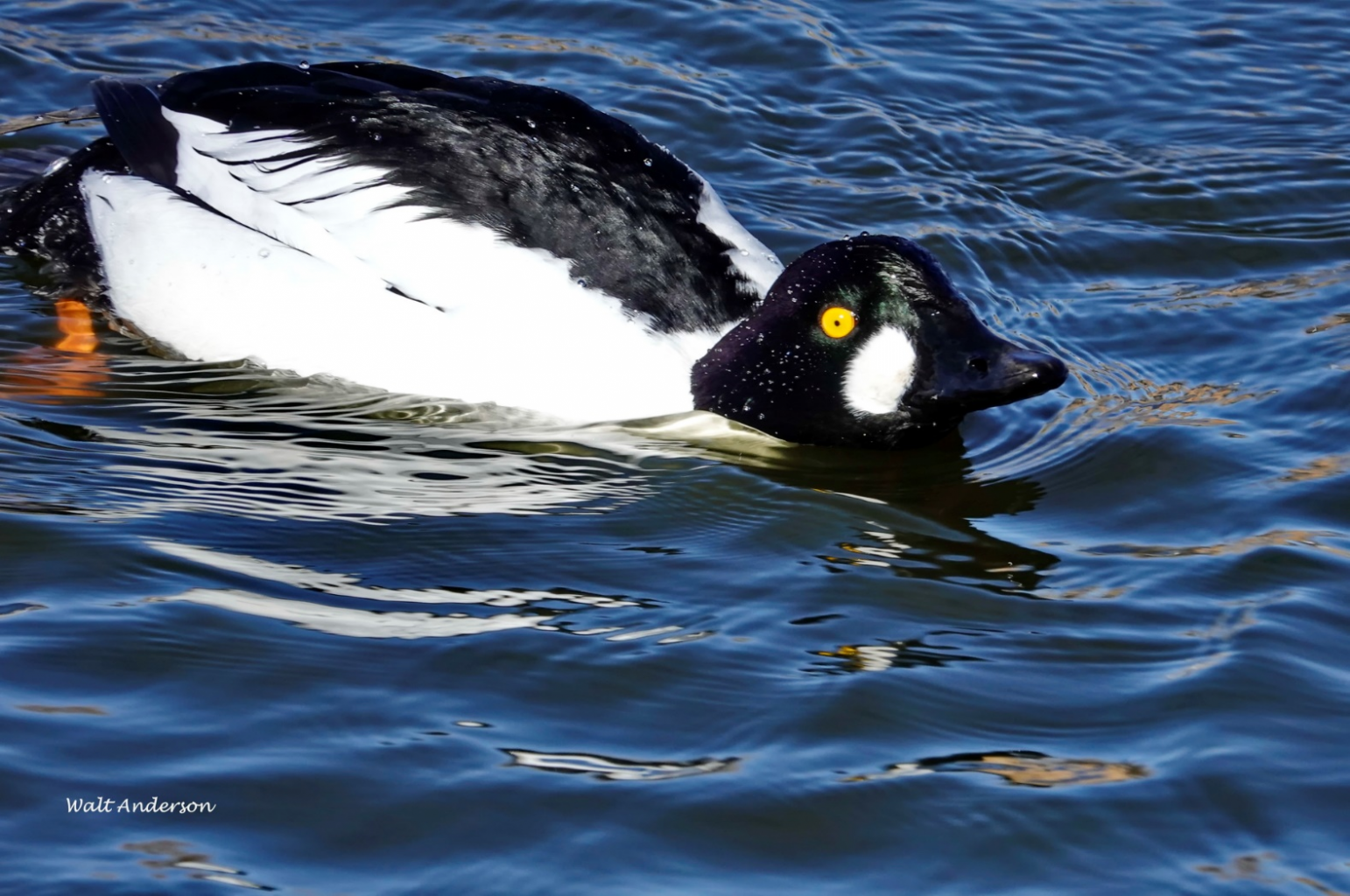
A common threat display is to move forward with the head lowered in a menacing manner. They may dive and emerge next to a perceived rival, where chasing and more threatening actions may occur. I love watching them interact—they seem to have much more dynamic personalities than most ducks.
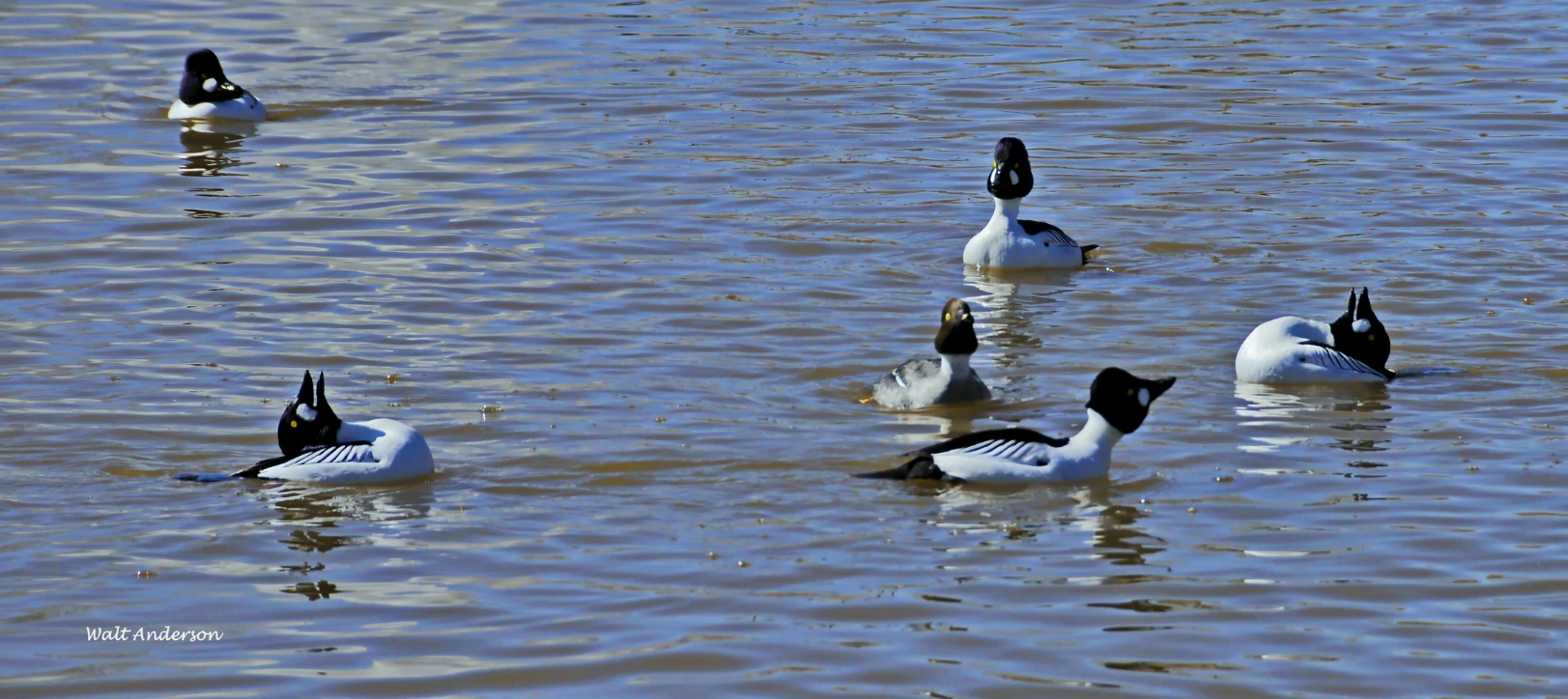
Since they court during their time on the wintering grounds, we in Arizona get to see the action from December through March, as males do their best to attract females and outdo their rivals. The thorough species profile in Birds of the World (a great on-line resource) characterizes a typical display, including duration in seconds, this way: “ Head-throw (1.4 s), Slow Head-throw-kick (2.2 s), Fast Head-throw-kick (1.25 s), Bowsprit (1.95 s), Head-throw-bowsprit (2.0 s), Nodding (0.7 s/nod), Masthead (4.8 s), Ticking (0.19 s), Head-flick (0.2 s), Head-forward (2.45 s), Head-up (2.6 s), Head-up-pumping (0.55 s), Head-back (1.15 s), and Head-back-bowsprit (1.55 s).” Wow, that’s a lot of choreography for any duck!
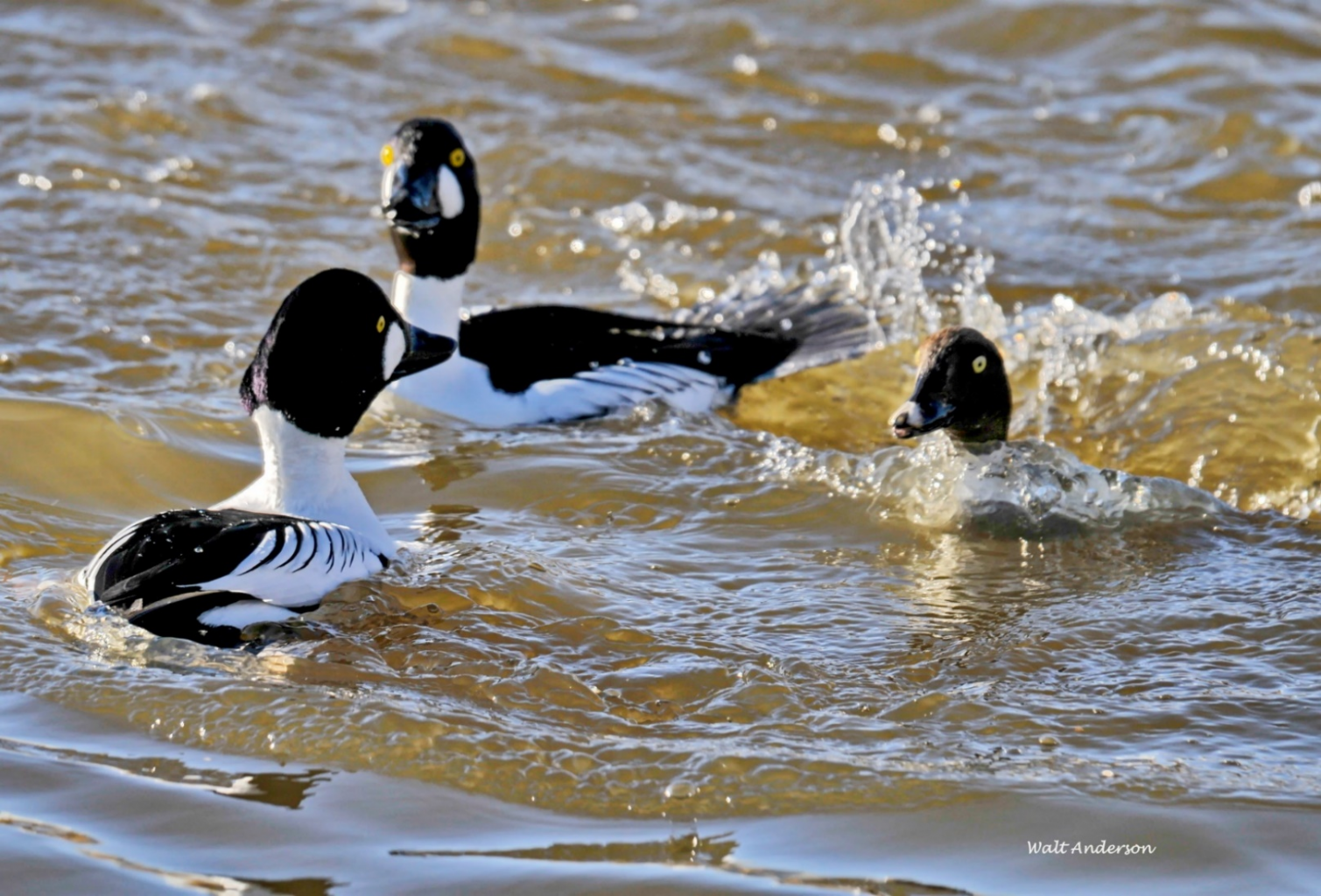
All the fancy courting actions will eventually impress a female, who will solicit mating with the male of her choice. He, in turn, will accompany her to the boreal breeding grounds, where she selects a cavity in a tree for a nest. When she is about two weeks into incubation, he abandons her, ducking all paternal responsibility, and she raises the precocial ducklings on her own.
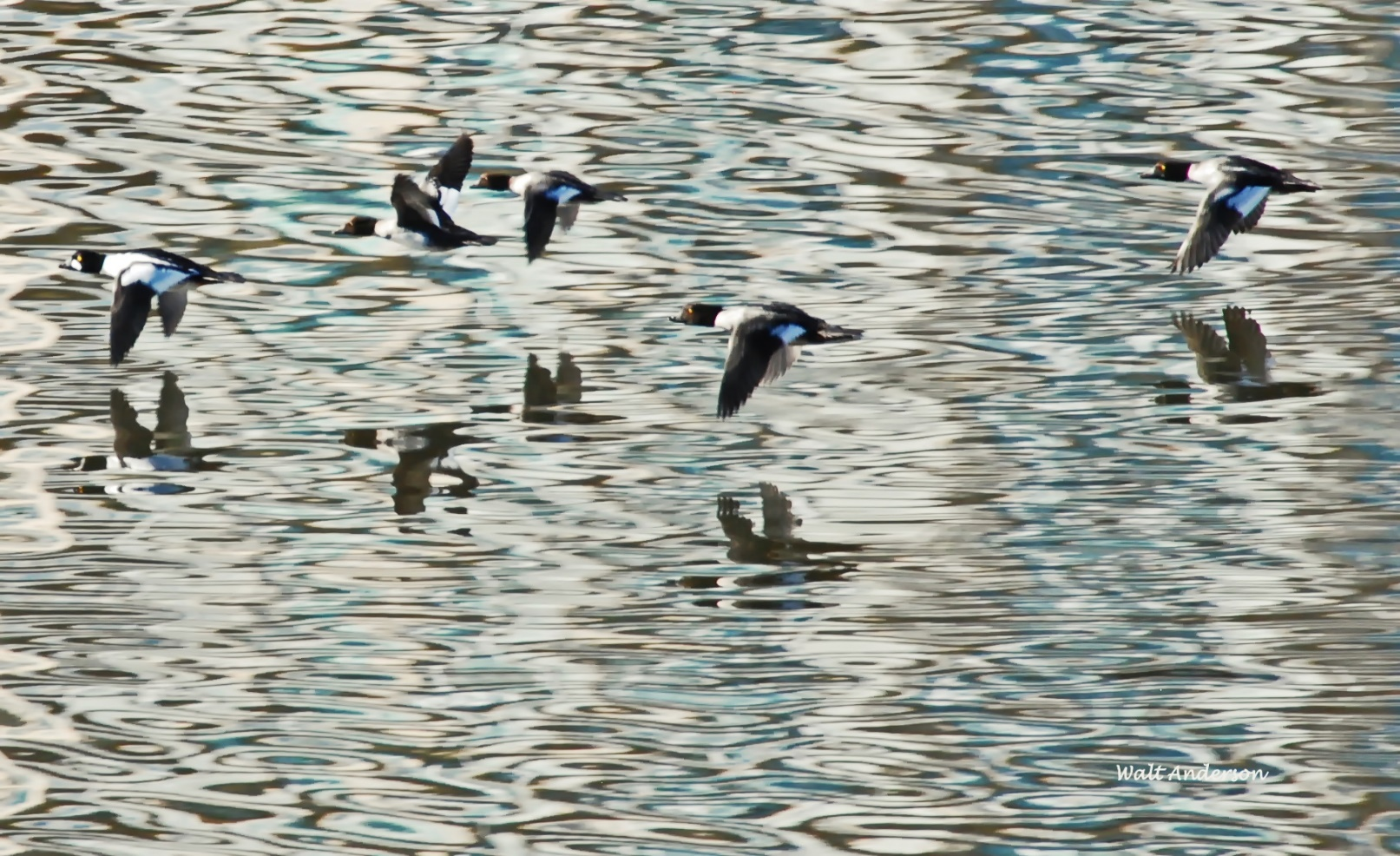
Goldeneyes are rapid flyers, giving off a distinct whistling sound with their wings. Thus many hunters refer to them as “whistlers.”

And here is Whistler’s Mother! Isn’t she a beauty?

Each fall I look forward to the return of the goldeneyes, knowing that I will get some avian entertainment when I see them. Climate change models predict that the species will probably stop coming as far south in the future. In addition, the boreal forest will be shifting northward. Already that forest is being harvested at unsustainable rates, and goldeneyes need old-growth trees with suitable nesting cavities. Since ducks need both breeding and wintering habitat, both at risk, the future is not secure for many species. Finding ways to deal with climate change, for our sake and for all other life on this remarkable planet, is certainly not something we humans should duck.
